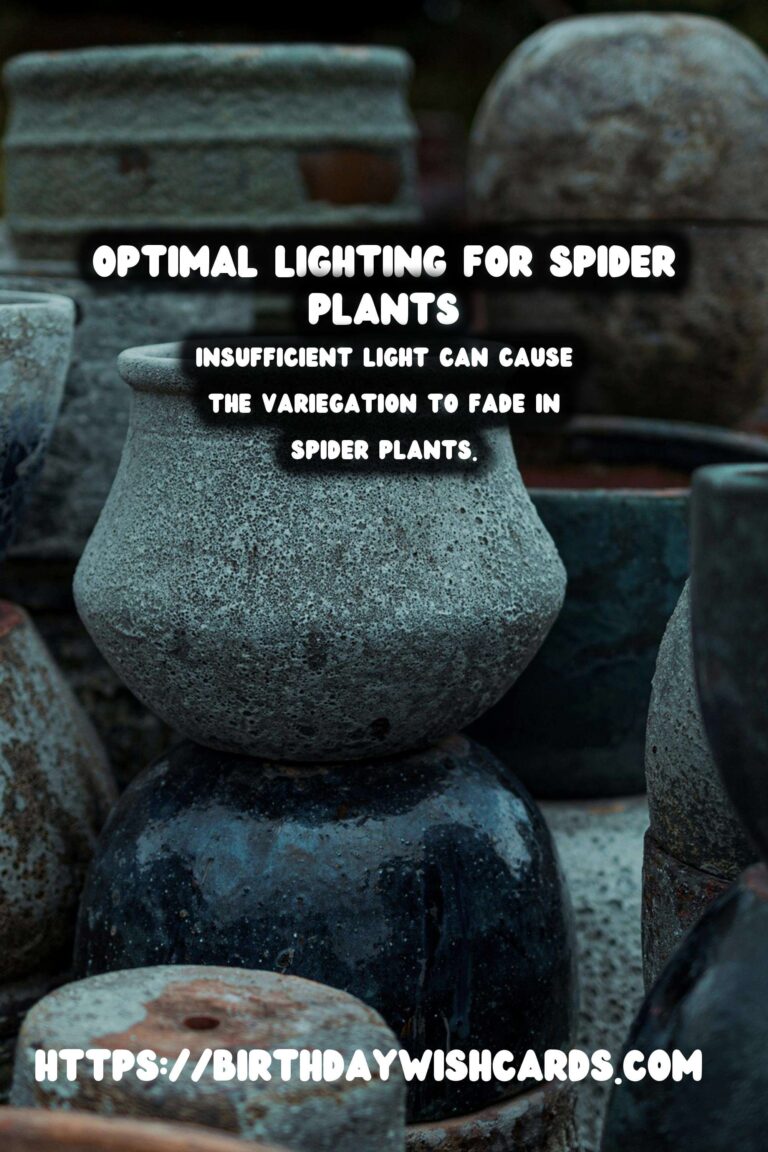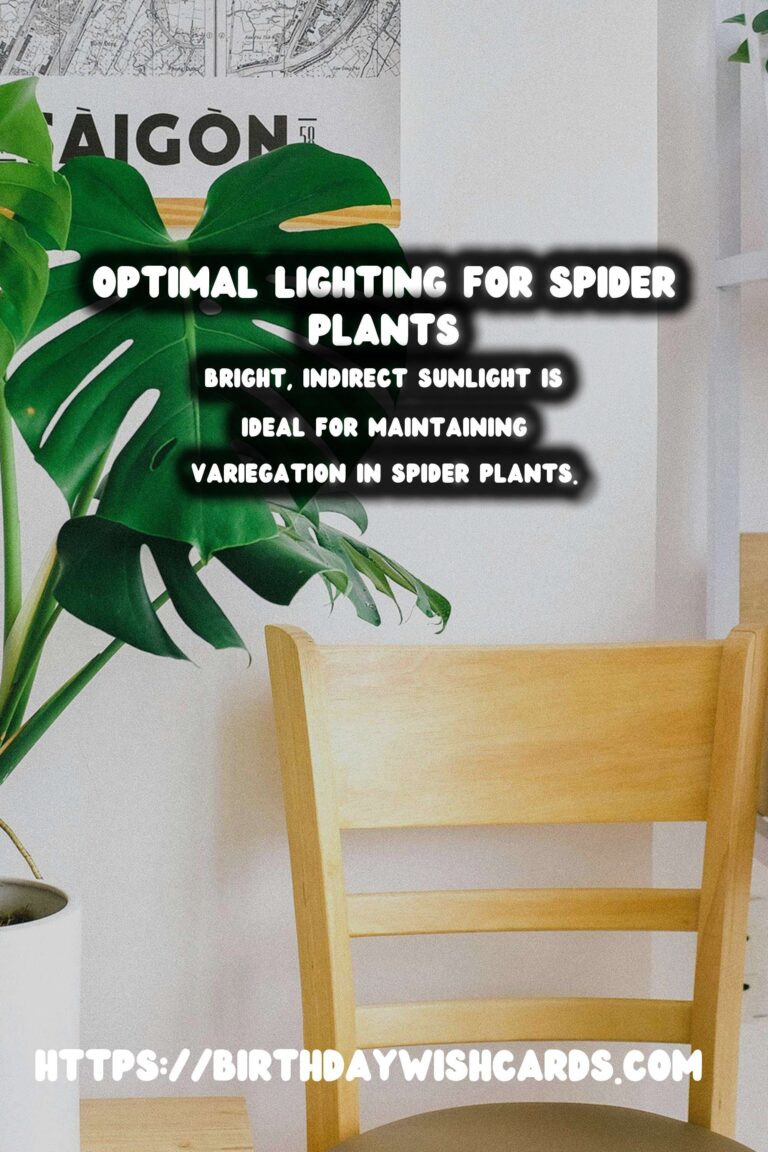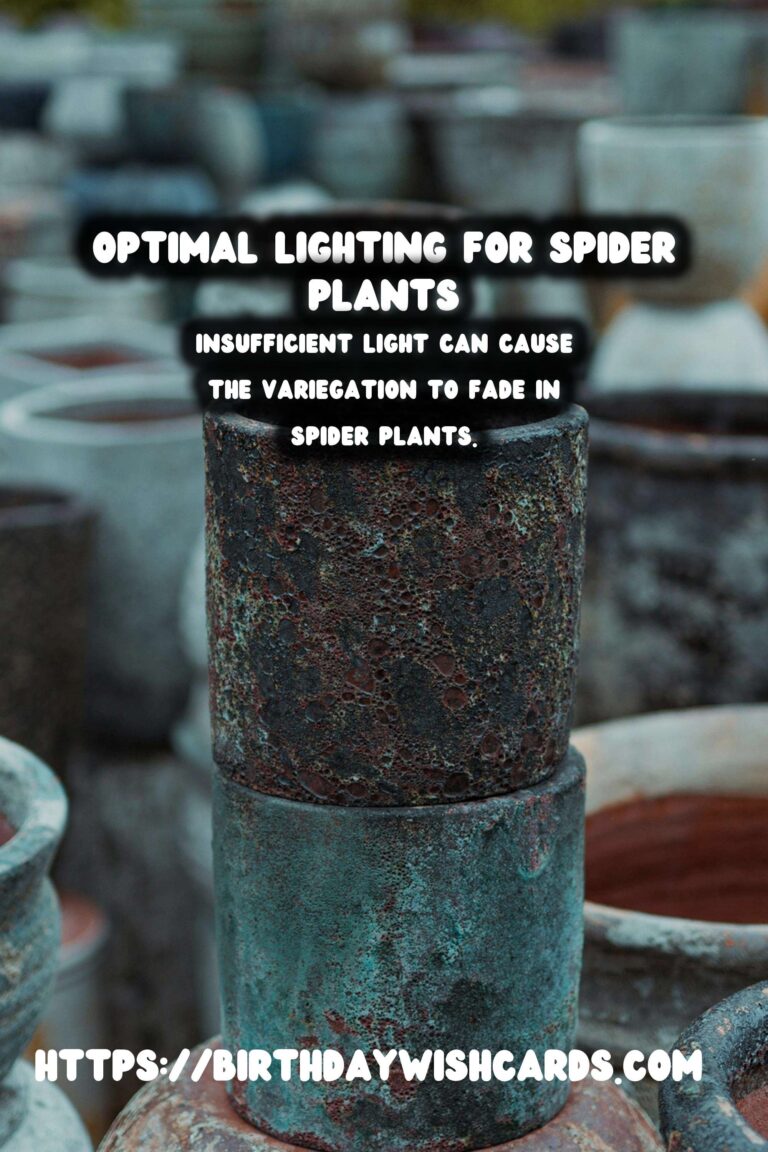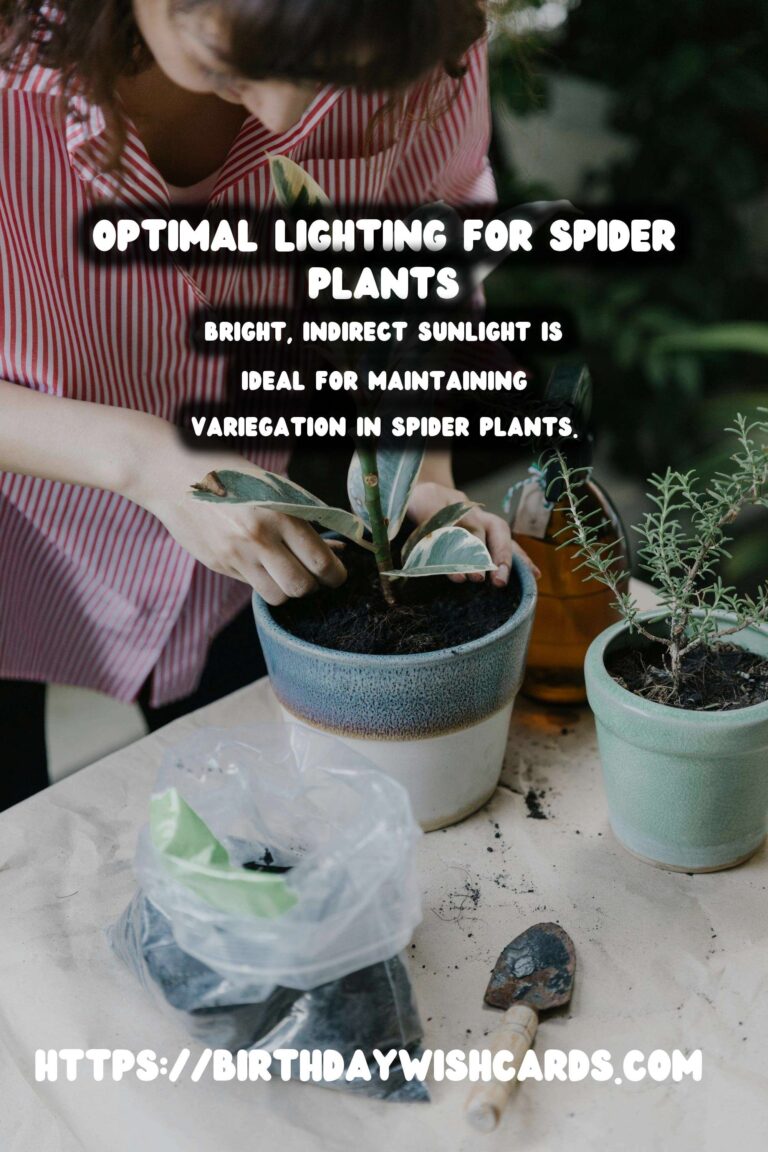
Spider plants, known for their lush green foliage and distinctive white stripes, are a popular choice for both novice and experienced gardeners. These resilient houseplants are not only easy to care for but also add a touch of elegance to any room. However, to maintain their striking variegation, providing the right lighting conditions is crucial.
Understanding Variegation in Spider Plants
Variegation refers to the appearance of differently colored zones in the leaves of plants. In spider plants, this usually manifests as white stripes along the edges or center of the leaves. This pattern is not just aesthetically pleasing, but it also indicates the plant’s health and vitality.
The Role of Light in Variegation
Light plays a significant role in maintaining the variegation of spider plants. While these plants are adaptable to various lighting conditions, the intensity and duration of light exposure can affect their color patterns. Insufficient light can cause the variegation to fade, resulting in a more uniform green appearance.
Optimal Lighting Conditions for Spider Plants
To preserve the vibrant variegation of spider plants, it is best to place them in bright, indirect sunlight. Direct sunlight can scorch the leaves, while too little light can dull the variegation. Ideal locations include east or west-facing windows, where the plant can enjoy bright light without the harsh rays of the sun.
For homes with limited natural light, consider using artificial lighting solutions. LED grow lights can effectively supplement natural light and help maintain the plant’s variegation without causing damage.
Signs of Incorrect Lighting
If a spider plant is not receiving the proper amount of light, it will show signs of distress. Watch for fading variegation, yellowing leaves, or slow growth. These symptoms are indicators that the plant may need a change in its lighting environment.
Additional Care Tips for Spider Plants
In addition to optimal lighting, spider plants thrive with proper watering and humidity levels. Water them once the top inch of soil feels dry, and ensure they have adequate drainage to prevent root rot. Spider plants also appreciate a humid environment, which can be achieved with regular misting or a nearby humidifier.
Fertilizing spider plants every few months with a balanced houseplant fertilizer can also promote healthy growth and vibrant variegation. However, be cautious not to over-fertilize, as this can lead to salt buildup in the soil.
Conclusion
Maintaining the beautiful variegation of a spider plant requires attention to its lighting needs. By providing bright, indirect light and monitoring the plant’s response, you can enjoy its striking appearance for years to come. With the right care, spider plants will continue to be a vibrant and decorative addition to your home.
Spider plants are popular for their lush green foliage and distinctive white stripes. Variegation in spider plants is affected by light intensity and duration. Bright, indirect sunlight is ideal for maintaining variegation in spider plants. Insufficient light can cause the variegation to fade in spider plants. Proper watering, humidity, and fertilization also support healthy spider plant growth. 









#SpiderPlants #PlantCare #IndoorGardening #Variegation #Houseplants




